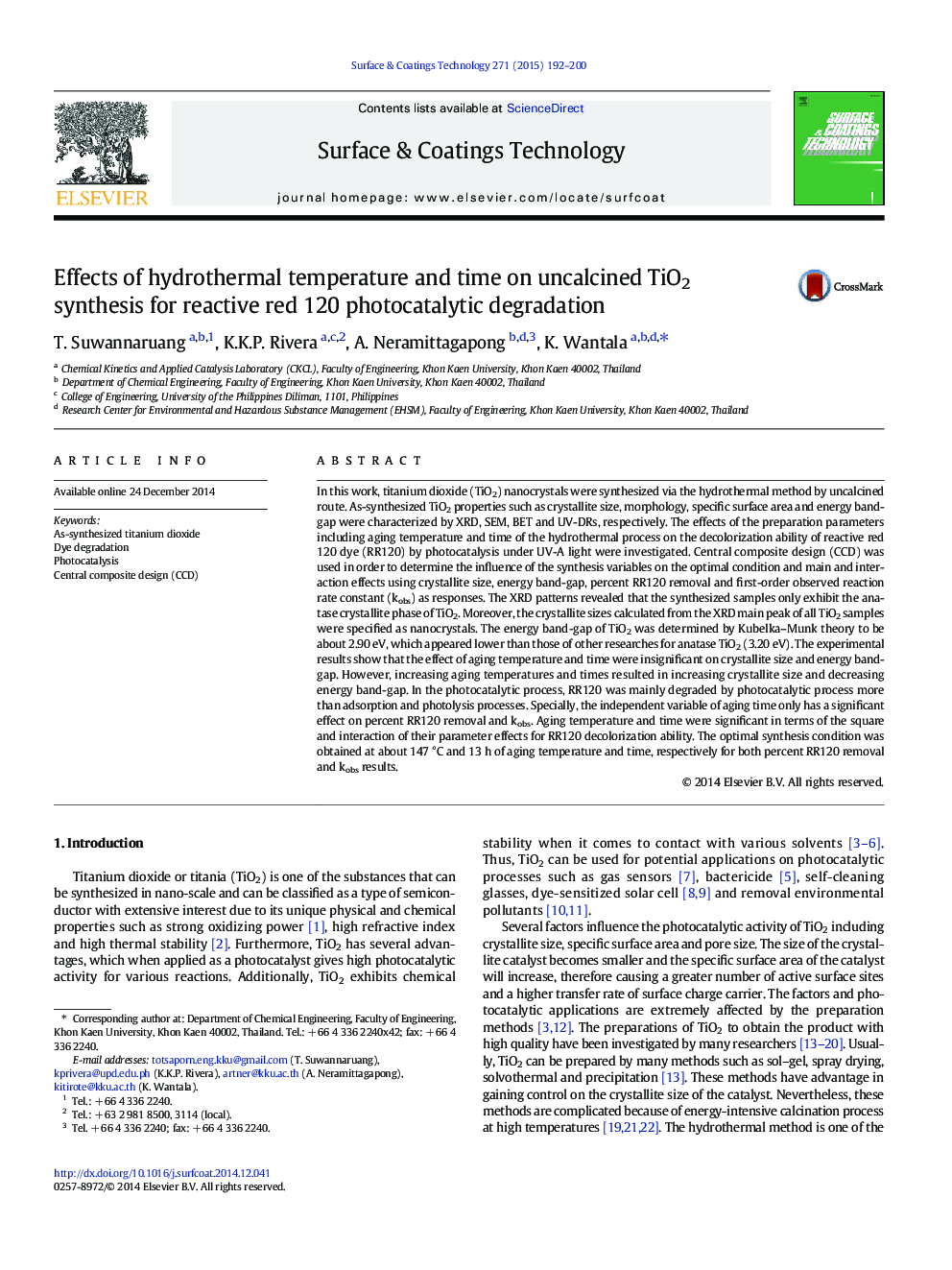| کد مقاله | کد نشریه | سال انتشار | مقاله انگلیسی | نسخه تمام متن |
|---|---|---|---|---|
| 1656904 | 1517608 | 2015 | 9 صفحه PDF | دانلود رایگان |

• Un-calcined TiO2 photocatalysts can be synthesized by hydrothermal treatment.
• Anatase TiO2 crystalline phase was observed in all samples.
• Energy band-gap, crystallite size, %RR120 removal and kobs were used as responses.
• Trends of energy band-gap and crystallite size were correlated with both variables.
• The optimal hydrothermal preparation condition as was about 147 °C and 13 h.
In this work, titanium dioxide (TiO2) nanocrystals were synthesized via the hydrothermal method by uncalcined route. As-synthesized TiO2 properties such as crystallite size, morphology, specific surface area and energy band-gap were characterized by XRD, SEM, BET and UV-DRs, respectively. The effects of the preparation parameters including aging temperature and time of the hydrothermal process on the decolorization ability of reactive red 120 dye (RR120) by photocatalysis under UV-A light were investigated. Central composite design (CCD) was used in order to determine the influence of the synthesis variables on the optimal condition and main and interaction effects using crystallite size, energy band-gap, percent RR120 removal and first-order observed reaction rate constant (kobs) as responses. The XRD patterns revealed that the synthesized samples only exhibit the anatase crystallite phase of TiO2. Moreover, the crystallite sizes calculated from the XRD main peak of all TiO2 samples were specified as nanocrystals. The energy band-gap of TiO2 was determined by Kubelka–Munk theory to be about 2.90 eV, which appeared lower than those of other researches for anatase TiO2 (3.20 eV). The experimental results show that the effect of aging temperature and time were insignificant on crystallite size and energy band-gap. However, increasing aging temperatures and times resulted in increasing crystallite size and decreasing energy band-gap. In the photocatalytic process, RR120 was mainly degraded by photocatalytic process more than adsorption and photolysis processes. Specially, the independent variable of aging time only has a significant effect on percent RR120 removal and kobs. Aging temperature and time were significant in terms of the square and interaction of their parameter effects for RR120 decolorization ability. The optimal synthesis condition was obtained at about 147 °C and 13 h of aging temperature and time, respectively for both percent RR120 removal and kobs results.
Journal: Surface and Coatings Technology - Volume 271, 15 June 2015, Pages 192–200